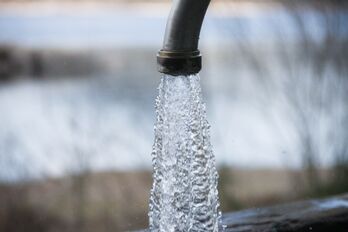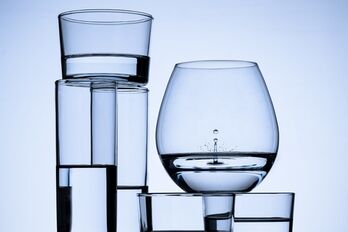What is Lurking in Your Tap Water?
Water is essential for life, and access to clean drinking water is critical for the health and well-being of individuals and communities. In developed countries, the municipal tap water is the primary source of drinking water for most people. While tap water is typically treated to remove contaminants and impurities, it still may contain harmful chemicals, bacteria, pathogens, and allergens that can pose a risk to human health. So, what are some of these toxins and contaminants and how can you avoid becoming sick?
Here is a list of chemicals, contaminants, toxins, pathogens and bacteria you need to look out for.
Chlorine and Chloramine
Chlorine and chloramine are commonly used to disinfect municipal tap water. Chlorine is effective at killing bacteria and viruses in the water, but it can react with organic matter in the water to form disinfection byproducts like trihalomethanes (THMs) and haloacetic acids (HAAs). THMs and HAAs have been linked to an increased risk of cancer and reproductive problems in animal studies and have been classified as possible human carcinogens by the International Agency for Research on Cancer (IARC). Chloramine, a combination of chlorine and ammonia, is also used to disinfect water, but it can cause skin irritation, respiratory problems, and digestive issues.
Lead
Lead is a toxic heavy metal that can leach into tap water from a number of sources, including old plumbing systems, service lines and illegal toxic waste dumping. Lead exposure can cause developmental delays in children, high blood pressure, kidney damage, and reproductive problems. The Environmental Protection Agency (EPA) has set a maximum contaminant level (MCL) of 15 parts per billion (ppb) for lead in tap water, but even low levels of lead exposure can be harmful, especially for pregnant women and children.
Pesticides and Herbicides
Pesticides and herbicides are chemicals that are used to control insects and weeds in agriculture. These chemicals can leach into groundwater and contaminate drinking water supplies. Exposure to pesticides and herbicides has been linked to cancer, reproductive problems, and developmental delays in children. The EPA regulates the use of pesticides and herbicides in agriculture, but there are still concerns about the safety of these chemicals in tap water.
Pharmaceuticals
Pharmaceuticals and personal care products containing antibiotics, hormones, and antidepressants, can also be found in your tap water. These chemicals can enter the water supply through human and animal waste, runoff from hospitals and pharmaceutical manufacturing plants and facilities. While the levels of these types of chemicals are generally low in tap water, there is concern about the long-term health effects of exposure to them, especially for vulnerable populations such as pregnant women and children.
E. Coli
E. coli is a type of bacteria that can cause serious illness if ingested. It is commonly found in the intestines of humans and animals and can enter the water supply through sewage leaks or agricultural runoff. Symptoms of E. coli infection include diarrhea, abdominal cramps, and fever.
Legionella
Legionella is a type of bacteria that can cause Legionnaires' disease, a severe form of pneumonia. Legionella can be found in stagnant water, such as hot tubs, cooling towers, and plumbing systems. Inhalation of contaminated water droplets can cause respiratory problems and fever.
Cryptosporidium
Cryptosporidium is a microscopic parasite that can cause gastrointestinal illness. It is resistant to chlorine and can survive in water for long periods. Cryptosporidium can enter the water supply through sewage leaks and animal waste. Symptoms of Cryptosporidium infection include diarrhea, abdominal cramps, and dehydration.
Fluoride
Fluoride is added to municipal water supplies in many countries to help prevent tooth decay. However, excessive exposure to fluoride can cause a range of health problems, including skeletal fluorosis, a condition that affects the bones and joints. Skeletal fluorosis can cause pain, stiffness, and deformity of the bones, and can lead to permanent disability.
Salmonella
Salmonella is a type of bacteria that can cause food poisoning. It is commonly found in contaminated food and water, and can cause symptoms such as diarrhea, vomiting and worse.
The first step to staying healthy by drinking clean, uncontaminated water is to test your tap water. These tests are inexpensive and are available online and at local hardware stores.
Photo by Silvan Schuppisser on Unsplash




